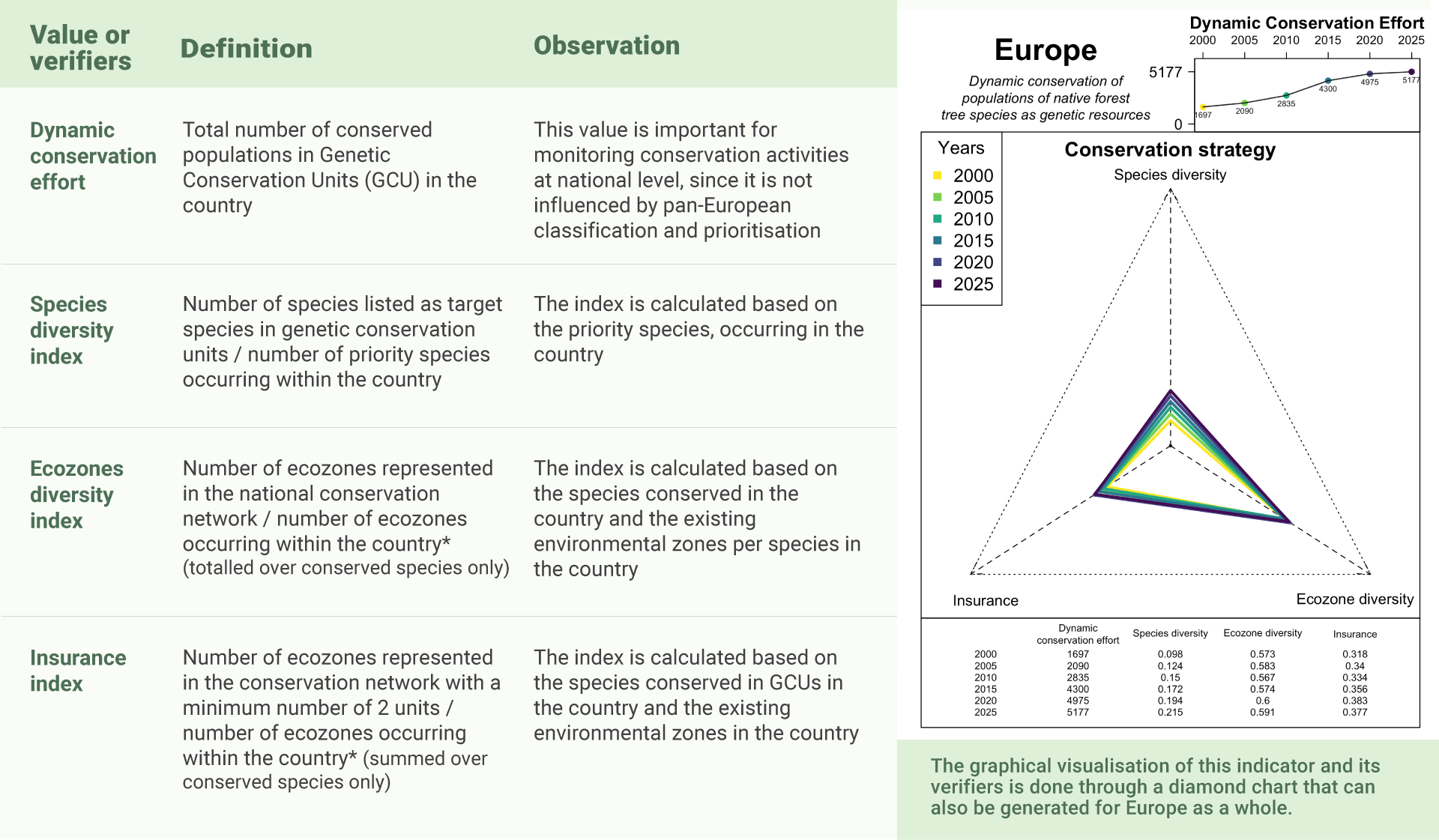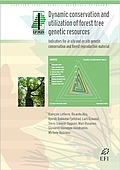Monitoring dynamic conservation of forest genetic resources
The dynamic conservation of forest genetic resources (FGR) in Europe is monitored using two key indicators: one for native tree species populations, and one for non-native tree species populations. These indicators help track efforts to conserve the evolutionary potential of forest trees, which is essential for adapting to environmental changes and supporting long-term forest resilience.
Who reports on conservation efforts?
EUFORGEN National Coordinators, through their respective EUFGIS National Focal Points, are responsible for reporting conservation efforts for both native and non-native tree species present in their countries.
- Native species are defined as tree species officially recognised as part of the country’s natural flora and which have evolved locally. They can be conserved in situ (at their place of origin) or ex situ (in a new location, within or outside the country, as long as the conservation is dynamic and allows for continued evolution).
- Non-native species are those introduced from outside Europe or species that are non-native within a specific country but have undergone at least one generational turnover in their current location
Monitoring dynamic conservation of native tree species
Monitoring the dynamic conservation of native tree species focuses on capturing the adaptive genetic diversity of these species across varying ecological conditions.
Because comprehensive genetic data are available for only a few species, the EUFORGEN community works on the assumption that local adaptation is a general feature of tree populations. In other words, where native species occur naturally, their genetic diversity likely reflects the environmental conditions they grow in. Based on this assumption, conservation efforts aim to ensure that native species, and selected non-native species, are represented within each major environmental zone in Europe.
These efforts are guided by the Pan-European strategy for genetic conservation of forest trees, which defines a systematic approach for conservation planning based on both political borders and ecological classification. The strategy uses a classification of Europe’s environment into eight environmental zones, following Metzger et al. (2013). This allows each Genetic Conservation Unit (GCU) to be classified based on its location within a given zone.
Verifiers for native species conservation
To assess national progress in the dynamic conservation of native forest genetic resources, countries are asked to report on four verifiers:

These indicators measure not just the scale of conservation efforts but also the extent to which they cover species diversity and ecological representativeness.
Data for this indicator are available retroactively through the EUFGIS information system, with records going back to 2000.
Monitoring dynamic conservation of non-native tree species
Non-native populations, those introduced to Europe or to a particular country and established through at least one generation, have had less time to evolve in their new environments. As a result, random genetic changes may play a larger role in shaping their genetic diversity in the short term, while adaptive structuring by ecozones may not yet be fully established.
Nevertheless, these populations can carry valuable genetic traits and should be recognised in conservation efforts. However, for practical and scientific reasons, only one key verifier is used to assess the dynamic conservation of non-native species:
- Number of dynamic conservation populations of non-native species
Retrospective data for this sub-indicator are also available from 2000 onwards in the EUFGIS database.
Toward a coherent monitoring framework
Together, these indicators form the backbone of Europe’s monitoring system for the dynamic conservation of forest genetic resources. By ensuring that native and selected non-native tree populations are conserved across a representative range of ecological zones, and that efforts are systematically recorded and assessed, EUFORGEN supports a continent-wide approach to securing the genetic foundation of Europe’s forests.
 | Dynamic conservation and utilization of forest tree genetic resources: indicators for in situ and ex situ genetic conservation and forest reproductive materialThis report offers a way to measure the conservation and use of the genetic diversity of forest… |
Download |
